linux安装mysql时执行 scripts/mysql_install_db --user=mysql报错 bash: mysql_install_db:未找到命令
Posted
tags:
篇首语:本文由小常识网(cha138.com)小编为大家整理,主要介绍了linux安装mysql时执行 scripts/mysql_install_db --user=mysql报错 bash: mysql_install_db:未找到命令相关的知识,希望对你有一定的参考价值。
参考技术Alinux安装mysql时执行 scripts/mysql_install_db --user=mysql报错 bash: mysql_install_db:未找到命令是因为没有创建mysql用户和组,步骤如下:
1、首先第一步就是进行操作系统的版本是centos7.4 64位,这里选择mysql 5.6.33 64位通用版即可。
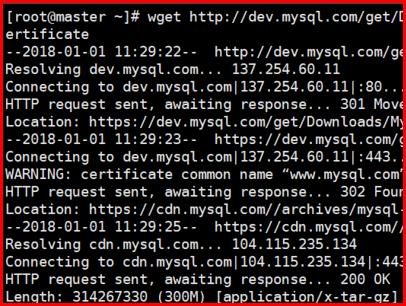
2、接着就是进行直接解压到 /usr/local/mysql目录中,接着就是进行[root@master ~]# mkdir -p /usr/local/mysql即可。
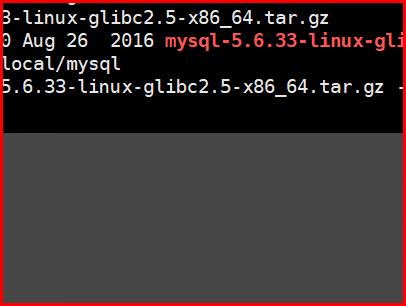
3、然后就是进行创建mysql用户和组,接着就是进行[root@master ~]# groupadd mysql即可。
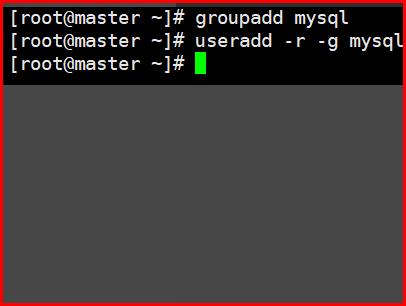
4、接着就是进行修改当前文件的所有者即可,chown -R mysql:mysql 。
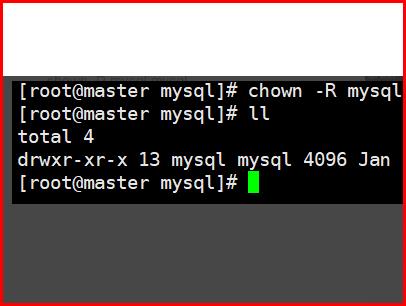
5、接着就是进行安装数据库/scripts/mysql_install_db --user=mysql即可,如下图所示。

6、最后一步就是进行启动Mysql即可。
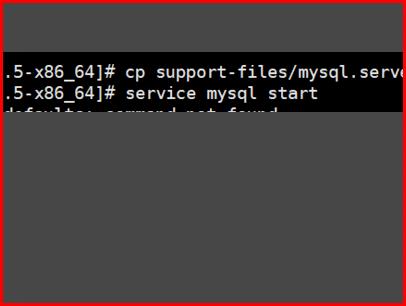
Linux(深度Linux)下安装MySQL 5.7
在以前的文章中,我聊过了Python的 __getitem__ 和 __setitem__ 方法。这些方法被称为“魔法”方法、特殊方法或者dunger方法(译者:国内书籍用“魔法”一词较多)。那么,什么是魔法方法呢?这正是今天我们要说的内容。
P.S.你会再一次的深深的爱上Python语言。
也将是一篇较长的文章,来让我们开始。
魔法方法究竟是什么?
魔法方法是一种具有特殊魅力的正常方法。Python通过这些魔法方法可以赋予你的class魔力。这些魔法方法都是以双下划线(__)作为前缀和后缀。坦率的讲,其实这些方法并没有什么魔法,另外这些方法这Python的文档中也没有较为详细的介绍,因此,今天我们就来详细的看一看这些方法。
魔法方法之初始化
所有的Python开发者都知道,__init__()是一个类(class)的第一个方法,也可以叫做构造函数。虽然,__init__()方法是第一个被创建的,但是它却不是第一个被调用的执行的,__new__()方法才是最早被调用的方法。
-
__new__()方法:先读取参数,如:类名称,args,和kwargs。然后,__new__()方法把这些参数传递给对类名称的__init__()方法。
语法:__new__(class_name, args, kwargs)
-
__init__()方法:是类的初始化方法或构造方法,这也几乎用于全局的初始化目的。
语法:__init__(self, args, kwargs)
-
__del__()方法:类的析构函数。切记,这并不是定义del x,而是定义了一个对象被垃圾回收的行为。
语法:__del__(self)
看一个例子:
class SimpleInit(object):
\'\'\'
Class to initialize a list with a value
\'\'\'
def __init__(self, value=10):
self._list = [value]
def __del__(self):
del self._list
魔法方法之算术运算
算术运算是非常常见的,因此,如果你想创建属于自己的数据结构,魔法方法会使你的实现更容易。例如:我们可以像这样,some_list + some_list2,实现Python的列表(list)拼接。类似这种的有趣行为,我们可以通过魔法方法的算术运算实现定义。
-
__add__(self, other) 定义加法 (+)
-
__sub__(self, other) 定义减法 (-)
-
__mul__(self, other) 定义乘法 (*)
-
__floordiv__(self, other) 定义整除法 (//)
-
__div__(self, other) 定义浮点型除法 (/)
-
__mod__(self, other) 定义取余模运算 (%)
-
__and__(self, other) 定义按位与 (&)
-
__or__(self, other) 定义按位或 (|)
-
__xor__(self, other) 定义按位异或 (^)
-
__pow__(self, other) 定义指数运算 (**)
-
__lshift__(self, other) 定义按位左移 (<<)
-
__rshift__(self, other) 定义按位右移 (>>)
例如:
class SimpleAdder(object):
def __init__(self, elements=[]):
self._list = elements
def __add__(self, other):
return self._list + other._list
def __str__(self):
return str(self._list)
a = SimpleAdder(elements=[1,2,3,4])b = SimpleAdder(elements=[2, 3, 4])print(a + b) # [1, 2, 3, 4, 2, 3, 4]
魔法方法之增量赋值
Python不仅允许我们定义算术运算,也允许我们定义增量赋值运算。如果你不知道什么是增量赋值是什么?那么我们来看一个简单的例子:
x = 5
x += 1 # This first adds 5 and 1 and then assigns it back to \'x\'
因此有的时候,你可能想写一些自自定义逻辑实现增量赋值操作。魔法方法支持的运算符有:
-
__iadd__(self, other) 定义加法 (+=)
-
__isub__(self, other) 定义减法 (-=)
-
__imul__(self, other) 定义乘法 (*=)
-
__ifloordiv__(self, other) 定义整除法 (//=)
-
__idiv__(self, other) 定义浮点型除法 (/=)
-
__imod__(self, other) 定义取模运算 (%=)
-
__iand__(self, other) 定义按位与 (&=)
-
__ior__(self, other) 定义按位或 (|=)
-
__ixor__(self, other) 定义按位异或(^=)
-
__ipow__(self, other) 定义指数运算 (**=)
-
__ilshift__(self, other) 定义按位左移 (<<=)
-
__irshift__(self, other) 定义按位右移 (>>=)
魔法方法之比较运算
Python有一组广泛的魔术方法实现比较。我们可以覆盖默认的比较行为,来定义使用对象的引用方法。下面是比较魔法方法的列表:
-
__eq__(self, other) 帮助检查两个对象的相等。它定义了相等运算 (==)
-
__ne__(self, other) 定义了不等运算 (!=)
-
__lt__(self, other) 定义了小于运算 (<)
-
__gt__(self, other) 定义了大于运算 (>)
-
__le__(self, other) 定义了小于等于运算 (<=)
-
__ge__(self, other) 定义了大于等于运算 (>=)
例如:
class WordCounter(object):
\'\'\'
Simple class to count number of words in a sentence
\'\'\'
def __init__(self, sentence):
# split the sentence on \' \'
if type(sentence) != str:
raise TypeError(\'The sentence should be of type str and not {}\'.format(type(sentence)))
self.sentence = sentence.split(\' \')
self.count = len(self.sentence)
def __eq__(self, other_class_name):
\'\'\'
Check the equality w.r.t length of the list with other class
\'\'\'
return self.count == other_class_name.count
def __lt__(self, other_class_name):
\'\'\'
Check the less-than w.r.t length of the list with other class
\'\'\'
return self.count < other_class_name.count
def __gt__(self, other_class_name):
\'\'\'
Check the greater-than w.r.t length of the list with other class
\'\'\'
return self.count > other_class_name.count
word = WordCounter(\'Omkar Pathak\')print(word.count)
魔法方法之类型转换
很多时候开发人员需要隐性的转换变量类型,来满足最要想要的结果。Python是关心你内在数据的类型的一种动态类型语言,除此之外,Python也关心你,哈哈!如果你想要自定义属于自己的方法,可以借助如下方法:
-
__int__(self) 定义类型转化为 int
-
__long__(self) 定义类型转化为 long
-
__float__(self) 定义类型转化为 float
-
__complex__(self) 定义类型转化为 complex(复数)
-
__oct__(self) 定义类型转化为 octal(八进制)
-
__hex__(self) 定义类型转化为 (十六进制)
-
__index__(self) 定义类型转化为一种int, 当对象被用于切片表达式( a slice expression)时
最常用的魔法方法
这里有一些魔法方法你应该经常遇到:
-
__str__(self) 定义了str()行为。例如,当你调用print(object_name),无论object_name是什么都会被__str__()执行
-
__repr__(self) 定义了repr()行为。这个很大程度上类似于__str__()。这两个之间的主要区别是,str()主要是人类可读的和repr()是机器可读的
-
__hash__(self) 定义了行为调用hash()
-
__len__(self) 返回容器的长度
-
__getitem__(self) 和 __setitem__(self). 更多内容可以详见我以前的博客文章。
-
__delitem__(self, key) 定义了一个删除一个项目的行为. 例如, del _list[3]
-
__iter__(self) 返回一个迭代容器
class CustomList(object):
def __init__(self, elements=0):
self.my_custom_list = [0] * elements
def __str__(self):
return str(self.my_custom_list)
def __setitem__(self, index, value):
self.my_custom_list[index] = value
def __getitem__(self, index):
return "Hey you are accessing {} element whose value is: {}".format(index, self.my_custom_list[index])
def __iter__(self):
return iter(self.my_custom_list)obj = CustomList(12)obj[0] = 1print(obj[0])print(obj)
coding 快乐!
以上是关于linux安装mysql时执行 scripts/mysql_install_db --user=mysql报错 bash: mysql_install_db:未找到命令的主要内容,如果未能解决你的问题,请参考以下文章